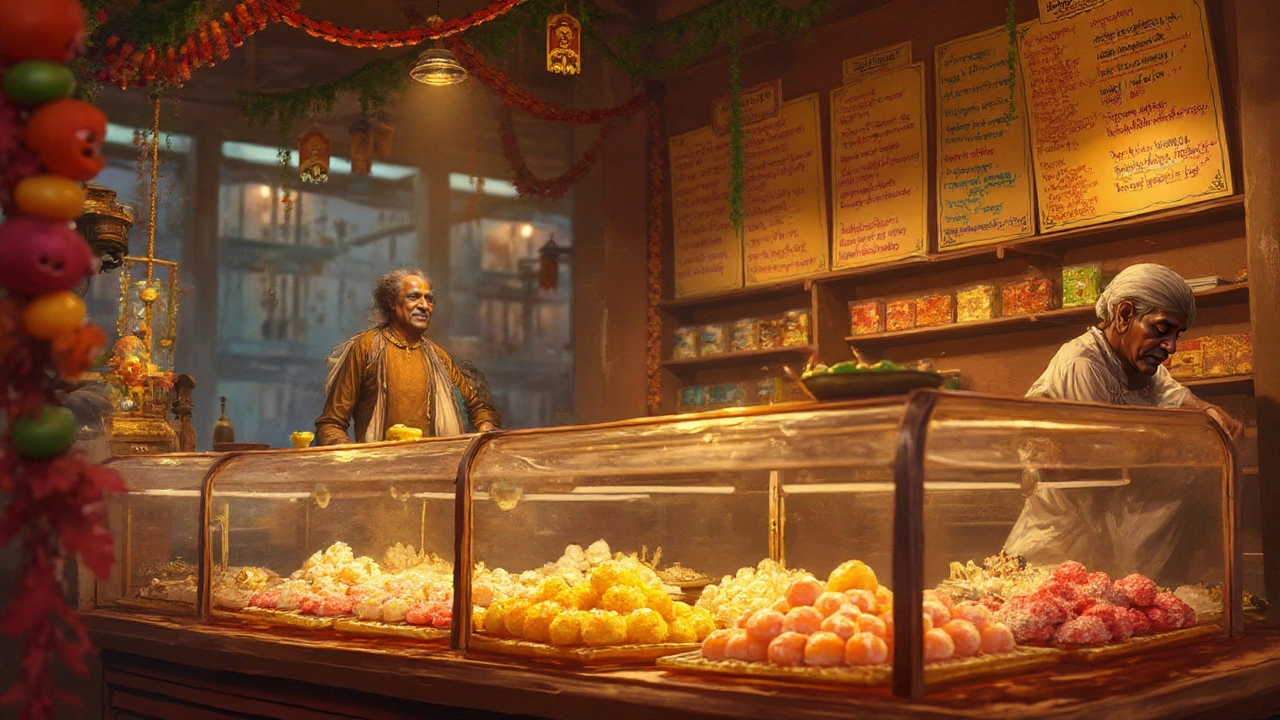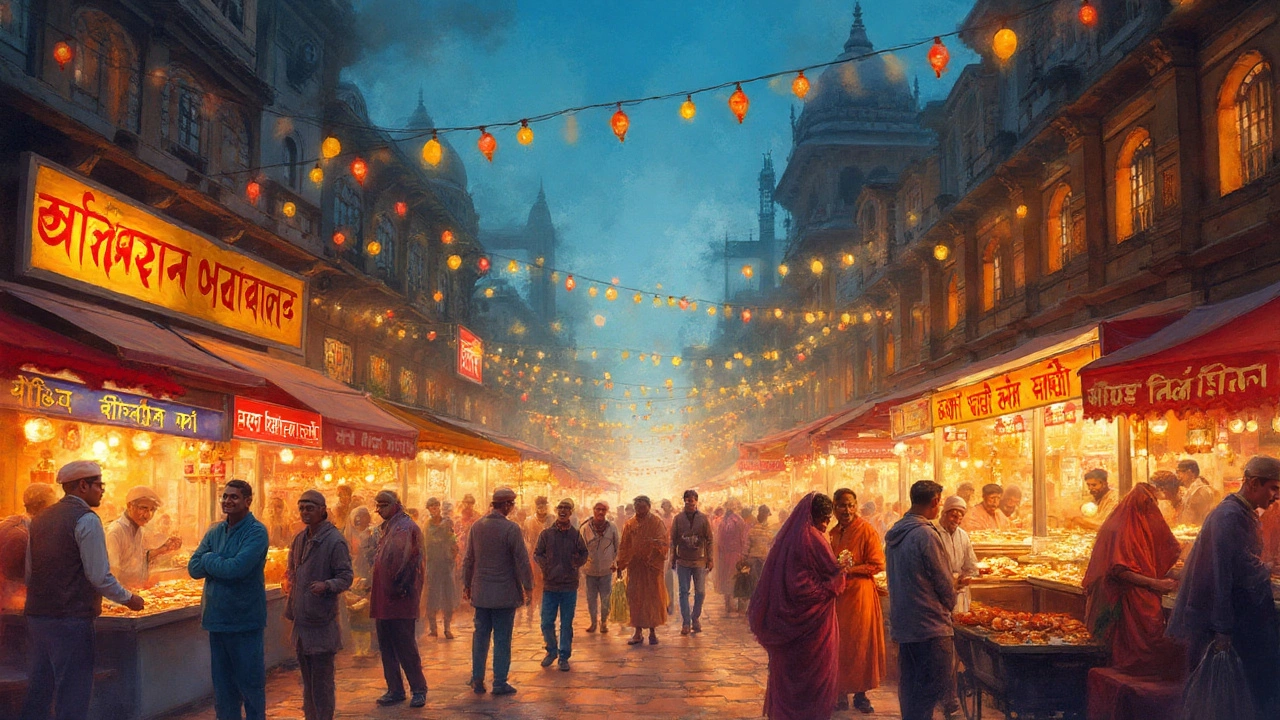If you asked ten people from ten different corners of India about the country’s best delicacy, you’d probably get ten completely different answers. India’s flavor scene isn’t just vast—it’s a wild maze of tangy, spicy, crunchy, creamy, and sweet. The word “delicacy” here takes on a life of its own. It can mean street food found at the corner chai wallah’s stand, an elaborate dessert that spends hours simmering away, or even grandma’s home-cooked ‘secret recipe’. The variety boggles the mind. Picture my dog Spotty, tilting his head in utter confusion every time someone mentions “chicken tikka” versus “rasgulla”—that’s pretty much how it feels when trying to define India’s top delicacy.
But there are a few dishes and treats that grab attention wherever you go. Some have such crazy stories behind them you might not believe they’re real—like a dish invented in a royal kitchen because a chef forgot an ingredient, or a sweet that traveled from a small Bengali town to weddings all across the world. India is obsessed with taste, and every festival, town, and even family has a dish they swear by. If you’re ready to peek into the Indian kitchen, buckle up for a ride that will leave your stomach rumbling.
Why Every Region Has Its Own Taste
India’s size and landscape are mind-boggling. We’re talking snowy Himalayas, sandy deserts in Rajasthan, lush coconut groves down South, and everything in between. This variety means the food changes every time you cross a state border. In Punjab, up North, expect things rich, buttery, and full of cream — think “Butter Chicken” and “Paneer Makhani.” Go east to West Bengal, and the rivers and marshy lands mean tons of fish and the unbeatable “rosogolla,” unbelievably soft cheese balls soaked in sugar syrup. Slide toward Gujarat, and it’s all about snacks and sweets—“dhokla” and “khandvi” are everyday favorites, paired with a thousand chutneys if you ask any local auntie.
In the South, coconut and rice rule the roost, with everything from idlis and dosas for breakfast to feisty hot “Andhra biryanis” for lunch. Jump over to Maharashtra and you’ll bump shoulders with plates of “pav bhaji,” a buttery veggie mash served with fluffy buns, and “modaks,” sweet dumplings that even gods (literally Lord Ganesha) worship. Visitors often miss the incredible variety in Goan food—yes, seafood is massive here, but so is their fudge-like “bebinca,” a multi-layered sweet loaded with coconut, eggs, and sugar.
Trying to pin down one delicacy for the whole country is like picking just one favorite song in a playlist of bangers. Some treats though, over the years, have become almost national icons. Each festival brings out its own special sweet or savory dish. And believe me, with more than 30 major festivals celebrated widely every year, India is always in the mood for a feast.
What makes things even more complex are religious and cultural traditions that shape the food. For instance, many people in India don’t eat beef or pork for cultural reasons. So their creativity shines elsewhere: paneer (fresh cheese) steps in for meat, or you find lentils used in a hundred ways. Even within the same religion, regions will serve up something totally unique—one part of Karnataka might have coconut-rich payasam, while another swears by wheat halwa.
If you love to explore, follow your tastebuds. Whichever state you visit has a super-special local pick: Rajasthan’s “daal baati churma,” Kerala’s “sadya” (a feast spread across a banana leaf), Nagaland’s smoked pork stew, or Bengal’s syrupy “Sandesh.” Making it to every state is a food lover’s dream—but ask any Indian, and they’ll say the best stuff is always home-cooked.

The Legends: Indian Sweets that Steal the Show
Ask anyone about truly iconic Indian delicacies, and sweets will take a front-row seat every single time. One statistic that might surprise you—India has more than 750 officially documented traditional sweets (and probably hundreds more off the record). Some are centuries old, with their roots deep in royal palaces and even temple kitchens.
Take “gulab jamun,” for example. These are deep-fried dough balls, soaked in a cardamom-scented sugar syrup. The story goes that they were inspired by Turkish sweets brought over by the Mughals. Or bite into a piece of “jalebi”—a crazy-bright orange spiral, crisp on the outside, gooey inside, and dripping with syrup. You’ll find it everywhere from roadside stalls to wedding buffets, usually gobbled up with a cup of masala tea.
Then there’s “rasgulla.” This spongy, juice-filled cheese sweet is considered a matter of pride in both West Bengal and Odisha, spawning a playful tug-of-war (so much so that they both fought for a Geographical Indication (GI) tag in court). Another contender, “barfi,” might be shaped into diamonds and topped with real silver leaf—fancy, right? But the best barfi, dusted with pistachios or made with coconut, is usually sold in non-descript sweet shops tucked in tiny lanes.
Here’s a little table of some of the most loved Indian sweets across different regions:
| Sweet | Region | Key Ingredients | Fun Fact |
|---|---|---|---|
| Gulab Jamun | North India | Milk solids, sugar, cardamom | Originally inspired by Persian sweets |
| Rasgulla | East (Bengal/Odisha) | Chenna, sugar | Has its own GI tag |
| Mysore Pak | South (Karnataka) | Gram flour, ghee, sugar | Created by accident for a King’s feast |
| Modak | West (Maharashtra) | Rice flour, jaggery, coconut | Favorite of Lord Ganesha |
| Kaju Katli | All over India | Cashews, sugar | The thinnest diamond-shaped sweet–exported worldwide |
And it’s not just about sweet flavors. Many Indian “mithai” (the word for anything sweet here) combine salty, nutty, or floral notes. Try “peda,” soft and crumbly with hints of cardamom. “Sandesh,” made simply with chenna (fresh cheese) and sugar, tastes light but feels decadent. Sweets are not just desserts; they’re a must at every celebration—marriages, birthdays, religious holidays, or even just when someone wins a cricket match in the street. If you want to score extra points with an Indian family, bring a box of laddoos or barfi. You’ll be welcomed like royalty.
And don’t skip the homemade sweets. Each region has its “secret” recipes—like Andhra’s “pootharekulu” (rice paper stuffed with jaggery), Bihar’s “thekua” (crunchy wheat cookies), or Kerala’s sticky banana halwa. Shelf life varies wildly: kheer (a rich rice pudding) will last a day, but ghee-laden desserts, like soan papdi, can travel in a backpack and survive the tough Indian heat—probably the reason you’ll always find relatives bringing boxes of sweets after every vacation.
Many households still make classic sweets during holidays, but you’ll also find new twists these days—vegan barfi, beetroot laddoo, sugar-free mysore pak. Sweets in India keep changing, yet somehow keep their roots planted deep in old traditions.

Not Just Sweet: Savory Indian Delicacies You Can’t Ignore
Shocking as it may sound, India’s delicacies are just as often spicy, tangy, or savory as they are sweet. Actually, most of India’s best-known “delicacies” start as humble street food—dishes you eat standing up, dodging traffic, wiping your fingers on your pants because you just can’t wait for a table.
“Pani puri” (or golgappa, puchka, depending on where you’re standing) is a national obsession. Small, crispy puffs bursting with spiced potato and splashed with an herby, sour, spicy water—no two shops make it the same way, and purists will make you taste-test at least a dozen before picking a favorite. Mumbai, the city that never sleeps, invented “vada pav”—a spicy potato patty stuck in a soft white bun, slathered with fiery chutneys. In Kolkata, it’s kathi rolls—flaky parathas wrapped around spicy kebabs or egg, onions, and sauces, all wrapped in a sheet of yesterday’s newspaper (because, why not?).
If you crave something heartier, try “biryani.” It comes with a fan following to rival any pop star—Hyderabad, Kolkata, and Lucknow each have their own style, and then every local chef claims theirs is best. Hyderabad’s biryani is loaded with saffron, juicy chunks of chicken or mutton, and a mountain of rice, slow-cooked in a sealed pot. On Sundays, you’ll see people queuing up at famous joints while their neighbors argue about the “right” recipe. Eating a plate of Hyderabadi biryani can be a day-long memory—don’t even attempt a second helping unless you’re prepared for a nap.
Then there’s the South Indian classic “dosa”—showing how even ‘simple’ street food can turn into a delicacy with a little love. Paper-thin, crispy, sometimes as big as your table, stuffed or plain, dipped in coconut chutney and sambar. Chennai, Bangalore, and pretty much every city in the south think their dosa-maker is the best. A 2022 survey said over 400 million dosas are eaten in India every month!
And don’t miss the snacks: samosas, crunchy with spicy potato, or the multi-layered “kachori” filled with lentils and served with sweet-sour sauces. Try “chaat,” a jumble of potatoes, chutneys, yogurt, and deep-fried doodads that’s refreshingly messy and impossible to eat neatly.
Curious how India fits all this into everyday life? Here’s a quick cheat-sheet of savory hits:
- Chole Bhature: Puffy fried bread paired with spicy chickpea stew—classic Delhi breakfast, best with a dash of tangy pickle.
- Bhel Puri: Puffed rice, crunchy sev noodles, vegetables, chutneys—light, addictive Bombay beach snack.
- Masala Dosa: Rice-lentil crepe stuffed with spiced potato, crispy and satisfying.
- Keema Pav: Minced spiced meat (or soy, if you like it vegetarian) with buttered buns, late-night food in Mumbai.
- Kulcha Chole: Fluffy bread with spicy North Indian chickpeas, smothered in onions and fresh coriander.
If you want to try these at home, a lot of them are surprisingly doable. Invest in a good pressure cooker and some basic Indian spices — cumin, coriander, cardamom, turmeric, garam masala, and chili powder. Even overseas, you’ll find Indian stores stocking frozen samosas, instant dosa batter, or ready-to-eat curries. If you’re lucky enough to travel, don’t just eat at big restaurants. Some of the best food waits at no-name roadside stalls run by families for generations. Watch how locals order—sometimes the secret is not on the signboard, but only if you ask.
All these savory treats and sweets only scratch the surface. India’s delicacies are endlessly creative. They’re tied up with tradition, clever use of local ingredients, and a national talent for sharing food. Trying to pick one as the best? You’ll probably need a whole lifetime, and even then, there’ll be something new next door. Meanwhile, Spotty’s at my knee, hoping one day someone decides to invent the ultimate dog-friendly biryani. If they do, you’ll hear it here first.

